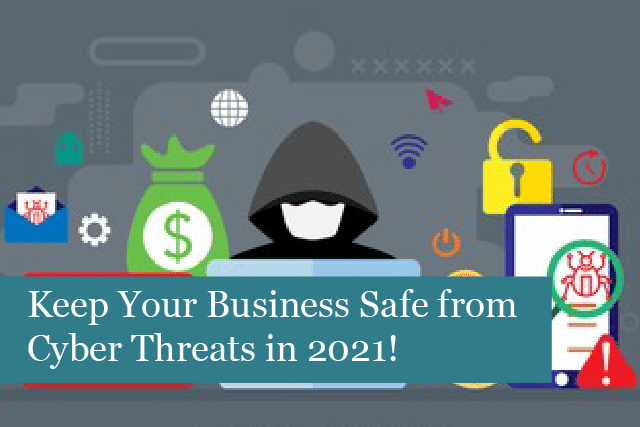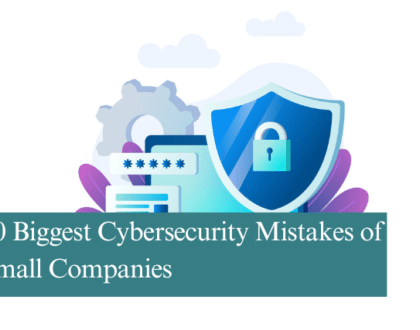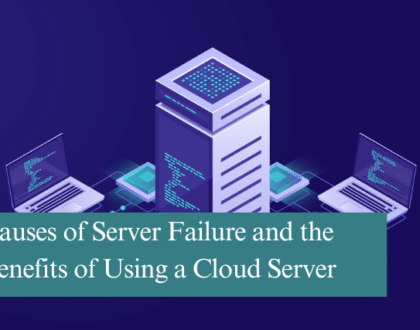
Cybersecurity has continued to be one of the main threats faced by many small and medium businesses. Cyber threats have only grown through this year, especially with all the changes the last year and a half have held for everyone. Businesses were often forced to switch to their employees working from home, which put these companies in even more danger from cyber attacks than ever before.
You might want to check out this article on the current state of cybersecurity in 20201. This article, by Embroker , provides statistics on the growing threats businesses face online. For instance, according to Embroker, the cost of cybersecurity in 2015 was $3 trillion; however, by the end of 2025, most security experts are predicting spending on cybersecurity will reach $10.5 and more.
Small and medium businesses continue to be the main objects of hackers and other cybercrooks. In fact, about 43% of these businesses have already suffered cyberattacks. Only about 14% of these companies have taken charge of ensuring they have the right level of security in place.
Just last year alone, about 66% of companies became the victims of cyberattacks, and this number looks set to only grow.
Remote Work Increases Cybersecurity Issues
In 2020, the world changed, and many were forced to work from home. Remote work then became a security experts’ nightmare. Many companies were not prepared for this huge change in employees working from insecure home networks or even using their own personal devices. Many companies lacked the infrastructure needed to ensure the level of security needed for remote workers.
During that time, the FBI cyber division received almost 4,000 cyber-attack complaints every day for months. That meant a 400% increase in cyber crime during the year. And ransomware attacks increased by about 800%. And things are not going to get any better as cybercriminals continue to become more sophisticated.
What Are the Current Trends in Cyber Attacks in 2021?
Unfortunately, 2021 has only brought more of the same. We’ve put together a list of the top trends in security threats so far this year:
· Cloud-based threats have increased, making cloud security essential for small and medium businesses.
· Insider threats from company employees and stakeholders, which are often backed by either negligence or malicious intent.
· Phishing attacks, where criminals try to gain access to company data through malicious emails and other means.
· Malware that allows hackers to steal, delete, or even encrypt data.
· Ransomware attacks, where a hacker holds your data “hostage” until you pay a ransom
· IoT devices, which are still relatively new, often have many vulnerabilities that can be overcome by hackers.
Keep in mind this list is comprised of the top cybersecurity threats faced by companies. This is not a complete list; however, it does provide you with an overview of what’s happening with cybersecurity.
Remote Workers: How to Keep Your Business Secure?
It’s a fact that having to use remote workers is necessary, but it also increases the chances of your company being hit by a cyber threat of some kind. So, how can you keep your remote workers and company safe and secure?
Here’s a list of some steps your company can take to improve overall security, even with many employees working from home:
1). Education & Strong Incidence Response
It’s essential to educate company employees on the dangers of cyber threats and the steps they can take to keep their own and the company’s data safe. This includes discussing insider threats, which are on the rise and can cause major damage to a business.
Teach employees what to watch for and how to identify possible threats. Then teach them what to do in case they encounter any suspicious activity or files. It’s imperative that everyone in the company understands the role they play in keeping themselves and the company safe from cyber threats.
Next, it’s just as essential to have a strong cyber incident response plan in place. This plan will go into effect if the company suffers a cyberattack. The plan should be a written document, which highlights the exact steps to be taken. The plan should also include details about the actions that each employee should take in the event of an attack.
2). Invest in Business Security
Investing in the right business security measures can mean the difference between falling victim to a cyberattack or repelling the attack. However, many small and medium businesses may feel they lack the funding necessary to install such security services. But it doesn’t take a huge budget to keep a company more secure. Let us explain.
For one thing, backing up all data and enforcing strict rules about each employee using a strong password can be quite effective. Rather than using regular passwords, using pass-phrases makes your network even more secure. A passphrase is nothing more than a collection of words or phrases. The passphrase makes it more difficult for hackers to crack. The use of multi-factor authentication also adds another essential layer of security.
Next, determine if your company has what’s needed to withstand and survive a cyberattack. This may mean hiring a security expert to come and run a checkup of your infrastructure. This will give you an overview of your cyber incident response capabilities.
Another option is to hire a breach readiness assessment expert. They can come and run an assessment, which provides you with an overview of how well your company can respond and deal with a cyberattack.
3). Use Strong Encryption Measures
All company data needs to be encrypted. This makes it more difficult for hackers to steal, destroy, or otherwise tamper with the data. And make sure all employees refrain from using public WiFi networks.
Using a proxy to encrypt data adds another layer of protection. For instance, with a residential proxy, employees will have anonymity when working from home. Hackers are not able to track or see online activities when a proxy is in use, which keeps company data more secure.
4). Keep Up with Audits
This is another essential step to take with your company’s cyber security. First, check to see if your industry requires specific audits. This is a requirement for most financial institutions. If your company must follow these procedures, then it’s necessary to ensure all steps have been taken to ensure your business is in compliance with these standards.
Frequent audits are one way to ensure you stay in compliance while strengthening your business against cyber threats.
Summing It Up
2021 has only seen an increase in cyber threats. Now is the right time to ensure your company takes all the measures it can to improve security to keep company data and employees safe and secure against cyberattacks.
Recommended Posts

10 Biggest Cybersecurity Mistakes of Small Companies
18th April 2025

The Importance of Planning in Business IT Solutions
11th April 2025

